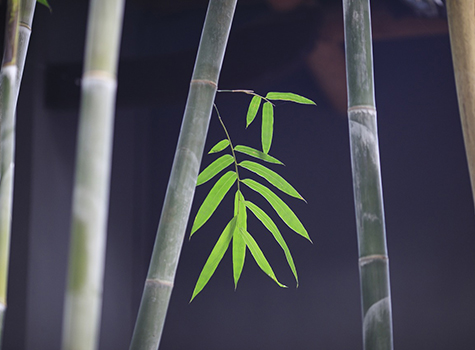
One of the specialties of classical dances is its ability to tell stories using Abhinaya or expression/mood. In the last few years I have noticed in most of the recitals, the importance is placed on the speed, glamor, costumes, lights, and the uniformity of the dancers. The most difficult part of learning classical dances is to master the Abhinaya. In the past, many years were spent by dancers mastering this skill using their eyes, eyebrows, lips, in short, all muscles in their face connecting them to their soul. The dancer lives the character, drawing the audiences to a deeper level of psychological partnership creating a journey into the dancer’s own world.
In order to achieve this deeper level of partnership, classical dances use Navarasa, the nine basic essences of emotions. Indian classical dance forms like Bharatha Natyam, Kathak, Kuchipudi, Odissi, Manipuri, Kudiyattam, Kathakali and others, place a very high priority on learning to tell a story using these emotions.
It is important to note that according to the dance styles, these emotions are portrayed in either exaggerated ways or in extremely subtle ways. For example, due to the large costumes and makeup, these expressions are much more elaborate in Kathakali. On the other hand, Kathak uses very subtle facial expressions. Bharatha Natyam and Kuchipudi dance styles express as we do in our daily lives.
Expressing Rasa in classical Indian dance form is referred to as Rasa-abhinaya. The Natyasastra, a book on dramaturgy, carefully delineates the bhavas used to create each rasa.
The names of the Navarasa/nine emotions are:
Ringara (love), Hasyam (comic), Karunam (pathetic), Raudram (furious/anger), Viram (heroic), Bhayanakam (fear), Bibhatsam (disgust), Adbhutham (wonder), and Shantam (tranquility/peace).
There is a shloka or prayer on Lord Rama in the Sanskrit language that describes all the nine Rasas.
Shringãram kshithinandiniiviharane viiram dhanurbhanjane
Kãrunyam hanumantham adbhutharasam sindhau girisdhãpane
Hãsyam shuurppanakhãmukhe bhayamakhe biibhatsamanyãmukhe
Raudram rãvanamarddane munijane sãntham param pãthunah
Meaning of the shloka is:
“He whose body is in the sentiment of Shringara as he moves with Sita;
In Vira, as he breaks the mighty bow;
In Karuna, as he protects the crow;
In Adhbuta, as he looks at the bridge of stones across the ocean;
In Hasya, as he watches Surpanakha;
In Bhayanaka and Bibhatsa, as he gazes upon others, except Sita;
In Raudra, as he kills Ravana;
In Shanta as he sees the Sages;
May, He, Lord Rama, protect us!”
All the Navarasas provide scope for presentation. However, it is the Shringara Rasa in its manifestations provides maximum subject matter for choreographing the dance. For instance, songs, which define the Ashtanayika (eight heroines) theme, have their basis as the Shringara (love) Rasa.
It is imperative at this stage to understand that the emotion of love or the Shringara Rasa when depicted in dance; it has a deeper philosophical and metaphysical intent. There is an inherent religious symbolism contained while presenting the Shringara Rasa. Indian dance has always been regarded as a medium of worship – an offering to the God. It is the search of human soul (Atman) for the Supreme and its desire to unite with the Ultimate (Brahma). The Bhakti Rasa or the feeling of devotion ought to underline any presentation of Shringara Rasa. It ought to be a case of “AntarBhakti-BahirShingara” (internal devotion in the external manifestation of love) wherein the love depicted is not the earthy physical emotion but the sublime longing of the soul for Union with the Lord.
Therefore, as we understand the Shringara Rasa a little more, let me describe the eight heroines and their specific characteristics. This particular dance, Ashtanayika used to be very popular. However, as long dances started to lose their popularity, these dances are being performed as individual dances.
The eight Nayakis or heroines are:
Abhisarika: yearning for her lover, goes out to meet him, For Example, Radha;
Kalahantarita: separated due to a quarrel, like Satya Bhama;
Khandita: broken hearted;
Prositapriya: whose lover or husband lives abroad;
Svadhinabhartrka: whose husband is charmed of her and stays with her;
Vassakasajja: dressed up for union, used a lot in Kathak;
Vipralabda: the deceived;
Virohitkhantita: distressed by separation.
In Bharatha Natyam, Kuchipudi and Kathak dances like Varnams, Javalis, and Tumris speak of such characteristics in the heroines.
I know all these names and their characteristics are hard to memorize. However, it is good to understand the importance of these roles and the pre-defined regulations of Natya Shastra when we choreograph dances. Accordingly, we can actually try to live the character we play and feel all the emotions of the characters we depict.
———-
For questions or comments contact Maha via e-mail at: [email protected]
Posted: Monday, December 3, 2018



